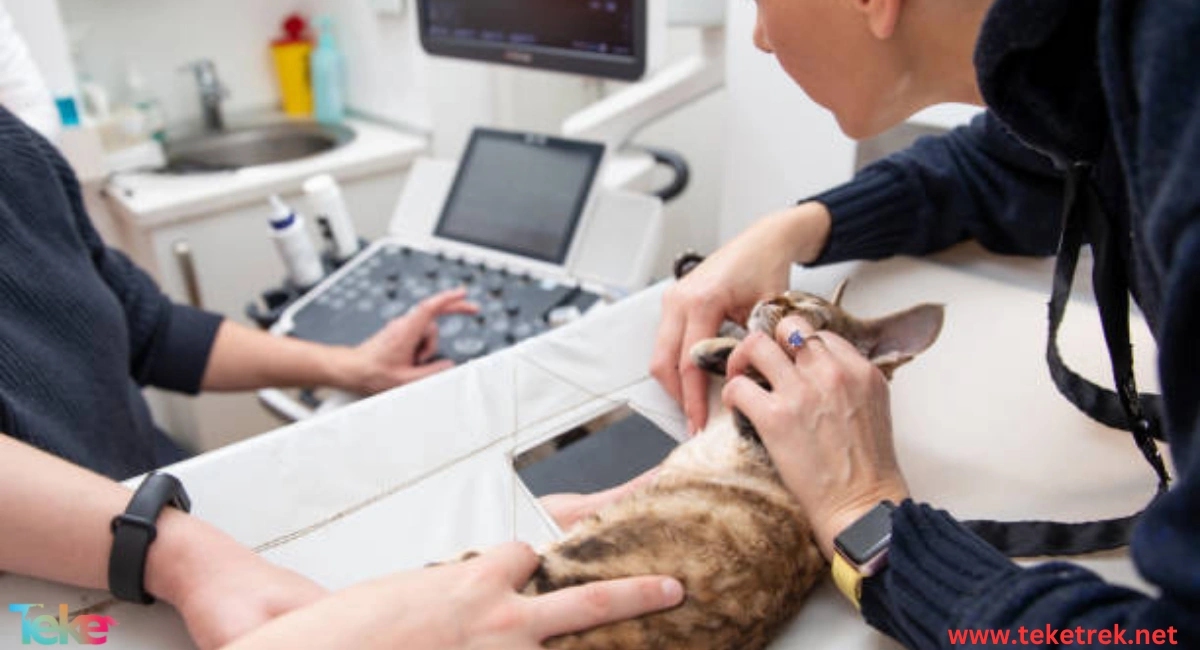Veterinarians suffer from heart disease in cats due to its precise details and high risk to the lives of cats. Therefore, careful observation of the nature of the cat’s behavior and daily activity must be taken into account before seeing a doctor for a careful examination.
A healthy heart is evidence of a healthy life for cats, as it is difficult to discover this except through precise procedures and the use of medical devices that help to accurately understand the cat’s condition. In short, heart disease can only be detected by a specialized veterinarian.
If you are a cat owner and need to know all the information about heart diseases in cats, follow this article from teketrek with us and learn the finest details about it. Get ready for a journey full of useful information for your domestic cat.

Symptoms of heart failure in cats: Recognizing the warning signs of heart problems
Cats usually suffer from heart disease, and it is not possible to know the reasons behind this infection, but it is likely due to genetic reasons, stress, or even a weak immune system, or viral and bacterial infection. Cardiomyopathy, or deterioration and failure of the heart muscle, is one of the most common Cat heart disease symptoms, and among the famous types of heart myopathy is as follows:
Dilated cardiomyopathy.
Hypertrophic cardiomyopathy: HCM in cats.
Restrictive cardiomyopathy.
Often when infected with this disease, some symptoms begin to appear one by one, including:
cough
Shortness of breath and wheezing
Panting with some fatigue
A swollen abdomen or swollen limbs
General weakness
Lethargy
Decreased appetite and weight loss
Sudden paralysis in one or both legs
The gums, lips or tongue are bluish-gray in colour.
Read also: Skin Infections and Skin Diseases in Cats: Causes, Symptoms, and Treatments
When do heart problems appear in cats? Times of heart disease in cats:
Symptoms of heart problems in cats appear as the disease progresses, but when they begin, cats completely hide these symptoms. However, with the help of a veterinarian, this can be found out and this is done by:
Lethargy, loss of appetite, and a state of fatigue and weakness that are greatly apparent when performing any specific activity.
The cat is noticed to be upset and have pain in the heart area.
Difficulty breathing, as you will notice a change in the breathing pattern, such as rapid or deep breathing. You will also notice that she is sitting with her legs spread apart, and you may notice that she is standing for long periods of time and it is difficult for her to lie down. This is due to fluids in the cat’s chest, which in turn hinders her breathing.
Sudden collapse and inability to use the back legs, in addition to feeling pain in this area. This is due to the occurrence of blood clots that settle in the blood vessels heading to the back legs.
Changes in behavior, such as isolation, reluctance to play, and signs of lethargy.
Changes in food, as it is noted that the cat loses appetite and shows signs of nausea, and thus you will find that it loses weight quickly.
Changes in color in some areas of the body, such as the lips and tongue, where the skin will become brown or blue, due to a lack of oxygen.

Methods for Congestive heart failure in cats treatment: Treatments available to improve heart health in cats:
There is still no appropriate treatment for this disease. The veterinarian takes some measures, such as exposing her to oxygen and proper ventilation, in addition to trying to reduce effort and running as much as possible to prevent the condition from increasing and developing to bad levels. The veterinarian can also prescribe some medications that reduce the symptoms and improve Cat’s blood circulation.
Medical treatments such as surgery and the use of chemical medications are also considered means that help relieve the pain associated with heart disease. In addition to changing the cat’s behavioral pattern and daily life, they may lead to positive results that are reflected in it. Visiting the doctor, consulting him, and following up on the cat’s periodic examination are also considered among the most helpful means. The cat recovers from this disease.
In the end, we find that heart disease in cats is one of the diseases that most threaten the lives of these cats. Therefore, every cat owner must periodically examine his cat, listen to the advice of the veterinarian, and implement them completely and without any hesitation. This is all to maintain the safety and health of the cat so that it can enjoy good health





